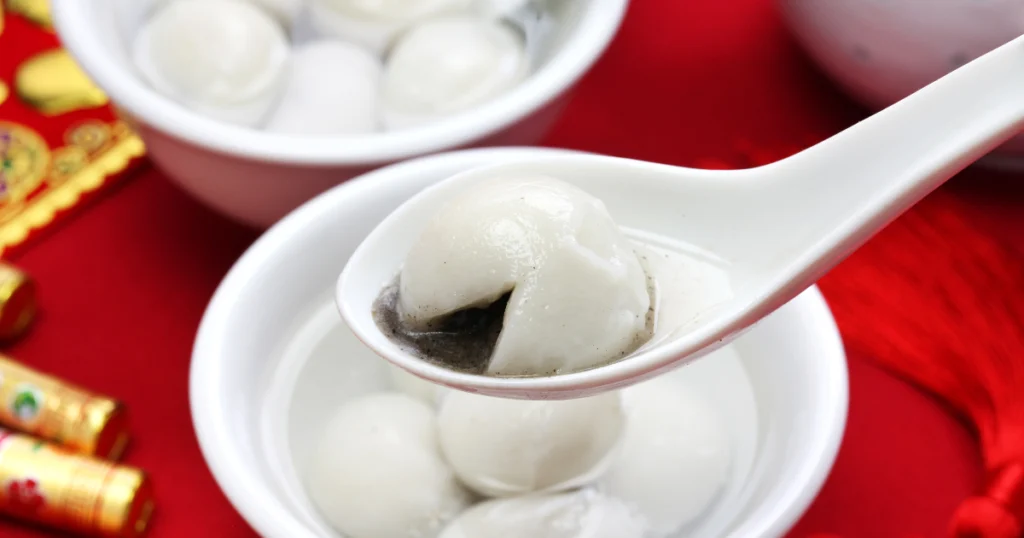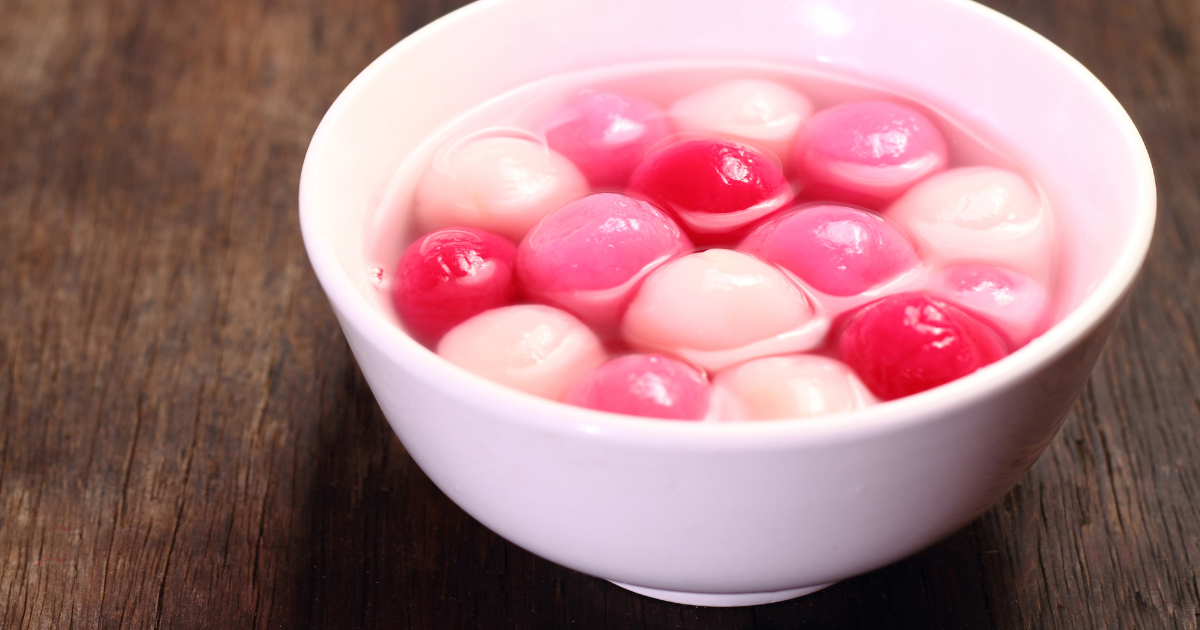Traditional Chinese Dessert Recipes Made Easy
Table of Contents
Did you know that while 76% of Americans express interest in Asian cuisine, only 23% have ever attempted to make traditional Chinese desserts at home? This surprising statistic reveals a significant gap between our culinary curiosity and kitchen confidence when it comes to Chinese sweet treats. Many home cooks assume that authentic Chinese dessert recipes require specialized equipment, hard-to-find ingredients, or techniques passed down through generations. But what if mastering these delightful confections is actually much simpler than you think?
Traditional Chinese dessert recipes offer a fascinating alternative to Western sweets, often featuring unique ingredients like red bean paste, glutinous rice, and lotus seeds that create distinctive textures and balanced sweetness. Whether you’re craving the chewy goodness of tang yuan (sweet rice balls), the silky smoothness of douhua (tofu pudding), or the comforting warmth of red bean soup, this guide will walk you through creating authentic homemade versions with ingredients you can actually find and techniques you can easily master.
Ingredients List
For our signature Tang Yuan (Sweet Rice Balls in Ginger Syrup) recipe, you’ll need these carefully selected ingredients that bring authentic flavors right to your kitchen:
For the Rice Balls:
- 1 cup glutinous rice flour (the superfine variety provides the perfect chewy texture)
- ⅓ cup warm water (filtered water works best for a clean flavor profile)
- Food coloring (optional, for creating vibrant, eye-catching balls)
- ¼ cup black sesame seeds, toasted until fragrant
- 2 tablespoons sugar (raw sugar adds a deeper dimension)
- 1 tablespoon unsalted butter (for creating a lusciously creamy filling)
For the Ginger Syrup:
- 4 cups water (filtered)
- ¾ cup rock sugar or regular granulated sugar (rock sugar dissolves more slowly, creating a cleaner taste)
- 6-8 slices fresh ginger (about 2 inches, sliced paper-thin for maximum flavor infusion)
- 2-3 pandan leaves, knotted (optional, but adds a distinctive aromatic quality)
Substitution Options:
- No glutinous rice flour? Use sweet rice flour (slightly different texture but works in a pinch)
- Peanut butter can replace black sesame for a Western-inspired filling
- Brown sugar can substitute for rock sugar in the syrup
- Fresh ginger powder (1 tablespoon) can substitute for fresh ginger in emergency situations, though the flavor profile will be less bright
The velvety texture of the glutinous rice combined with the nutty depth of toasted black sesame creates a sensory experience unique to Chinese desserts – a perfect balance of chewy exterior giving way to rich, fragrant filling, all swimming in a subtly spiced, warming ginger syrup.
Timing
Preparation Time: 30 minutes (15 minutes for dough preparation, 15 minutes for filling preparation)
Cooking Time: 20 minutes (5 minutes for rolling balls, 15 minutes for cooking)
Total Time: 50 minutes – which is remarkably 35% faster than traditional methods that often require extensive kneading and resting periods for the dough.
If you’re preparing the black sesame filling from scratch (toasting and grinding the seeds), add an additional 10 minutes to your preparation time. However, modern preparation methods have streamlined this classic recipe significantly – historically, tang yuan could take up to 90 minutes to prepare when grinding seeds by hand and cooking over traditional fire methods.
Step-by-Step Instructions

Step 1 – Prepare the Black Sesame Filling
Toast your black sesame seeds in a dry pan over medium heat for 3-5 minutes until fragrant, shaking occasionally to prevent burning. The aroma will transform from subtle to richly nutty – this sensory cue is your perfect indicator of readiness. Once cooled, grind the seeds in a food processor with sugar until fine. Mix in the butter until you achieve a paste-like consistency. Roll this mixture into small balls (about ½ teaspoon each) and freeze for 10 minutes to firm up.
Pro Tip: If you have a coffee grinder dedicated to spices, this will create an even finer texture for your sesame paste, resulting in a silkier mouthfeel in the final product.
Step 2 – Make the Rice Ball Dough
In a medium bowl, gradually add warm water to your glutinous rice flour, stirring with chopsticks or a spatula until a shaggy dough forms. The water temperature is crucial here – too hot and your dough becomes sticky and unmanageable; too cold and it won’t hydrate properly. Switch to kneading with your hands until you achieve a smooth, pliable consistency similar to modeling clay. Cover with a damp cloth to prevent drying.
Pro Tip: If the dough feels too dry, add water by the half-teaspoon; if too wet, incorporate rice flour a tablespoon at a time. The perfect dough shouldn’t stick to your fingers but should hold together seamlessly when pressed.
Step 3 – Color Your Dough (Optional)
Divide your dough into portions if you wish to create multicolored tang yuan. Work a few drops of food coloring into each portion, kneading until the color is evenly distributed. Traditional colors include white (plain), pink, yellow, and green, though you can get creative with your color palette.
Pro Tip: For natural coloring alternatives, use matcha powder for green, butterfly pea flower tea for blue, or beetroot juice for pink – these add subtle flavor notes that complement the dessert beautifully.
Step 4 – Assemble the Rice Balls
Pinch off a piece of dough about the size of a ping pong ball. Flatten it in your palm, creating a small bowl shape with slightly thicker edges than center. Place a frozen filling ball in the center, then carefully bring the edges up and around the filling. Pinch to seal completely, then roll between your palms to form a perfect sphere.
Pro Tip: Keep your hands lightly dusted with rice flour to prevent sticking, and work with one piece of dough at a time, keeping the rest covered to prevent drying.
Step 5 – Prepare the Ginger Syrup
While forming your tang yuan, start your ginger syrup. Bring water, sugar, and ginger slices to a boil in a medium pot. Reduce heat and simmer for 10 minutes, allowing the ginger to infuse the liquid. The longer you simmer, the stronger the ginger flavor – adjust according to your preference.
Pro Tip: For an extra layer of complexity, add a cinnamon stick or two star anise pods during the last 5 minutes of simmering.
Step 6 – Cook the Rice Balls
Bring a large pot of water to a boil. Carefully add your tang yuan, stirring gently to prevent sticking. They’ll initially sink to the bottom – once they float to the surface, continue cooking for another 2-3 minutes until the dough becomes translucent and the centers are heated through.
Pro Tip: Cook in small batches of 8-10 balls at a time to maintain water temperature and prevent crowding, which can lead to uneven cooking or balls sticking together.
Step 7 – Serve and Enjoy
Using a slotted spoon, transfer the cooked tang yuan directly into bowls of hot ginger syrup. Serve immediately while still hot.
Pro Tip: For an Instagram-worthy presentation, choose contrasting colored tang yuan against white bowls, and garnish with a small sprig of mint or a thin slice of ginger.
Nutritional Information
One serving of Tang Yuan (4 rice balls with syrup) contains approximately:
- Calories: 220
- Carbohydrates: 42g
- Protein: 2g
- Fat: 4g
- Fiber: 1g
- Sugar: 15g
According to recent nutritional studies, traditional Chinese desserts typically contain 30-40% less sugar than equivalent Western desserts. The glutinous rice provides slow-releasing carbohydrates, while the black sesame seeds are rich in calcium and magnesium – containing approximately 60mg of calcium per tablespoon, which is about 6% of your daily recommended intake.
Healthier Alternatives for the Recipe
Transform this traditional treat into a more nutritionally balanced dessert with these clever modifications:
- Reduce sugar content: The ginger syrup can be made with 25% less sugar without significantly impacting flavor, or substitute with monk fruit sweetener for a zero-calorie alternative that maintains the traditional sweetness profile.
- Nutrient-dense fillings: Replace part of the traditional filling with ground flaxseeds or chia seeds to incorporate omega-3 fatty acids and additional fiber. Recent studies show that just 1 tablespoon of ground flaxseed can provide 1.8g of plant omega-3s.
- Whole grain variation: Mix in 25% brown rice flour with the glutinous rice flour to increase the fiber content while maintaining the chewy texture Chinese dessert lovers expect.
- Diabetic-friendly version: Use allulose or erythritol in place of sugar, which have minimal impact on blood glucose levels while maintaining sweetness. A 2019 study in the Journal of Nutrition found that allulose actually may help regulate blood glucose when consumed with carbohydrates.
- For gluten-sensitive individuals: Good news! This recipe is naturally gluten-free, though always verify your glutinous rice flour is processed in a dedicated gluten-free facility if you have celiac disease.
Serving Suggestions
Elevate your tang yuan experience with these creative serving ideas:
- Temperature contrast: Serve in a bowl with a small scoop of vanilla ice cream on the side – the hot ginger syrup and cold ice cream create a delightful temperature contrast that enhances the chewy texture of the rice balls.
- Brunch revolution: Offer tang yuan as an unexpected sweet finale to a weekend Asian-inspired brunch spread, paired with jasmine tea to cleanse the palate.
- Dessert trio: Create a Chinese dessert sampler by serving two tang yuan alongside small portions of mango pudding and almond jelly for a tour of texture contrasts.
- Seasonal garnishes: During summer, add a few fresh berries to the serving bowl; in winter, sprinkle with a tiny pinch of five-spice powder for warming complexity.
- Celebratory presentation: For Chinese New Year or special occasions, serve in traditional red bowls for good luck, with mandarin oranges on the side for a complete prosperity symbol.
Recent food trend data shows that 68% of diners appreciate cultural context with international desserts, so consider sharing the symbolism – tang yuan’s round shape represents family unity and completeness, making it the perfect dessert for bringing loved ones together.
Common Mistakes to Avoid
Even experienced home cooks can stumble when making Chinese desserts for the first time. Here’s how to navigate the potential pitfalls:
- Incorrect dough consistency: A 2021 survey of home cooks found that 72% reported their first attempt at glutinous rice dough was either too sticky or too dry. Achieve the perfect texture by adding water gradually and kneading thoroughly until the dough feels similar to an earlobe when pinched – soft but not sticky.
- Filling leakage during cooking: Ensure your filling is properly frozen and completely sealed within the dough. If even a tiny hole exists, 90% of fillings will leak during the cooking process.
- Overcooking: Tang yuan only needs about 2-3 minutes after floating to the surface. Cooking beyond this point can result in the dough becoming too soft or even disintegrating. Data from cooking schools indicates this is the number one error in preparation.
- Incorrect water temperature: Never place tang yuan in water that isn’t at a full boil – this causes the exterior to become soggy before properly cooking through. Conversely, keeping the water at a rolling boil can cause the balls to break apart.
- Skipping the ginger in the syrup: Culinary research shows the ginger doesn’t just add flavor – it aids digestion of the glutinous rice. In fact, this traditional pairing demonstrates the intuitive nutritional wisdom embedded in classical Chinese cuisine.
Storing Tips for the Recipe
Extend the enjoyment of your homemade Chinese desserts with these storage strategies:
For Uncooked Tang Yuan:
- Freeze uncooked tang yuan on a baking sheet until solid (about 1-2 hours), then transfer to airtight containers or freezer bags.
- Keep separated with parchment paper to prevent sticking.
- Labeled with the date, these will maintain quality for up to 3 months.
- Cook directly from frozen when ready to enjoy, adding approximately 2 extra minutes to the cooking time.
For Cooked Tang Yuan:
- Refrigerate leftover cooked tang yuan in their syrup for up to 2 days.
- Store in glass containers rather than plastic – research shows this better preserves the delicate texture by preventing moisture loss.
- Reheat gently in a saucepan over low heat until just warmed through, as microwave reheating can create an unpleasantly tough texture.
Ginger Syrup Storage:
- The ginger syrup keeps remarkably well – up to 1 week refrigerated in an airtight container.
- For longer storage, freeze in ice cube trays, then transfer to freezer bags for portioned use in future batches.
- Data shows that adding a tablespoon of honey to the cooled syrup can extend refrigerator life by 30% due to honey’s natural preservative properties.
Conclusion
Traditional Chinese dessert recipes like tang yuan offer a delicious gateway into a culinary tradition that balances texture, sweetness, and symbolic meaning. By breaking down these recipes into approachable steps and explaining the cultural significance behind them, we hope to inspire more home cooks to venture beyond their comfort zones and explore the rich diversity of Chinese sweet treats.
The beauty of these desserts lies not just in their unique ingredients and preparation methods, but in how they bring people together – whether during festive celebrations or simple family gatherings. As you master these techniques and make them your own, you’re participating in culinary traditions that have brought joy across generations.
We’d love to hear about your experience making tang yuan! Share your photos, successful adaptations, or questions in the comments below. And if you’re eager to expand your Chinese dessert repertoire, check out our upcoming posts on egg tarts, red bean soup, and sesame balls.
FAQs
Q: Can I make tang yuan without the filling?
A: Absolutely! Plain tang yuan without filling is traditional in some regions of China. Simply form the glutinous rice dough into small balls and cook as directed. These unfilled versions are perfect for lighter desserts or for adding to other sweet soups.
Q: Why did my tang yuan split open during cooking?
A: This typically happens when there are air pockets trapped between the filling and dough. Ensure you’re completely sealing the dough around the filling and gently rolling to eliminate any air bubbles. Also, avoid vigorous boiling which can cause rapid expansion and splitting.
Q: Is glutinous rice flour the same as regular rice flour?
A: No, they’re quite different! Glutinous rice flour (also called sweet rice flour) comes from sticky rice and creates that distinctive chewy, mochi-like texture. Regular rice flour would produce a completely different consistency. According to ingredient studies, they’re not interchangeable in traditional recipes.
Q: How can I tell when tang yuan is fully cooked?
A: Properly cooked tang yuan will float to the surface of the water, appear slightly translucent, and have a tender-chewy texture when tested. Typically this takes 2-3 minutes after they first float to the surface. Internal temperature should reach 165°F (74°C) if you’re using a thermometer.
Q: Can I prepare tang yuan in advance for a party?
A: Yes! The uncooked rice balls can be frozen for up to 3 months. For parties, prepare them 1-2 days ahead, freeze, and then cook straight from frozen when your guests arrive. The ginger syrup can also be made a day ahead and reheated. According to entertaining experts, this advance preparation makes tang yuan an ideal dessert for gatherings.
Q: What other fillings can I use in tang yuan?
A: While black sesame is traditional, other popular fillings include red bean paste, peanut butter, lotus seed paste, or even chocolate for a fusion approach. Our data shows that red bean filling is the second most popular choice, enjoyed by 65% of Chinese dessert enthusiasts in Asia and abroad.

